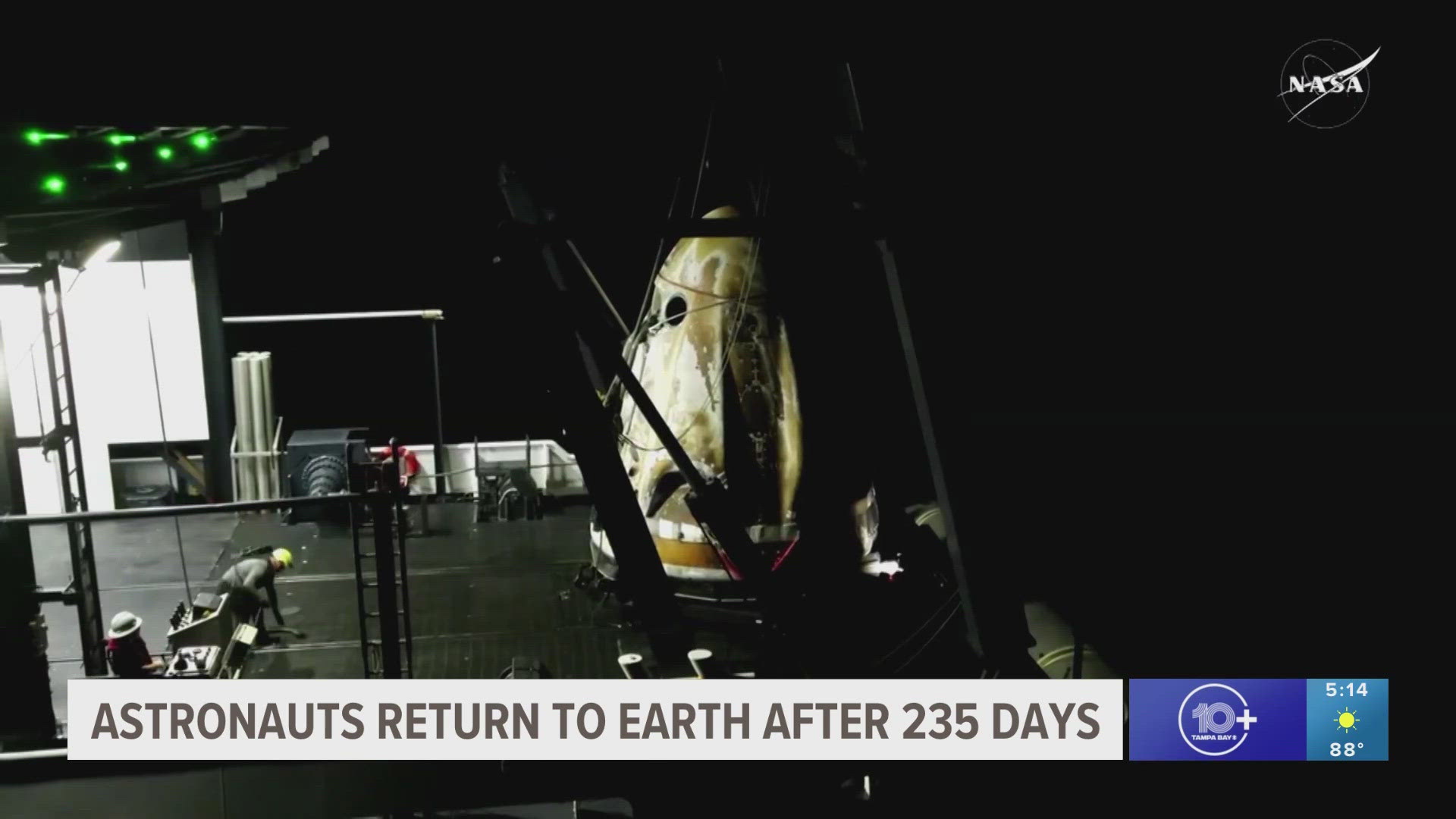A battle between billionaires over the number of miles their spacecraft will travel into space begs the question: Where does space even begin?
You've probably never given it more thought than it being outside the pull of Earth's atmosphere or pointing to the sky and saying that it's "that way."
But it's more complex than that.
Virgin Galatic just successfully sent its first fully crewed test flight into space for three to four minutes. The crew on board, including the company's founder Sir Richard Branson, reached weightlessness as the Unity 22 spacecraft climbed to an altitude of about 53 miles.
But, if you ask Blue Origin, the commercial space company backed by Jeff Bezos, it wasn't far enough.
"From the beginning, New Shepard was designed to fly above the Kármán line so none of our astronauts have an asterisk next to their name. For 96% of the world’s population, space begins 100 km up at the internationally recognized Kármán line," the company tweeted.
Bezos' will be onboard the New Shepard rocket on July 20 when his team launches into space. The date puts his company's history-making moment just more than a week behind Branson.
So, who's right? It depends on who you ask.
The Fédération Aéronautique Internationale (FAI) agrees with Blue Origin and defines the beginning of space as the Kármán line. The recognized imaginary boundary of space is at an altitude of about 62 miles.
It's also where the National Oceanic and Atmospheric Administration says "a conventional plane would need to reach orbital velocity or risk falling back to Earth."
But then you have agencies like NASA and the U.S. Air Force that find the edge of space begins 12 miles south of the Kármán line. According to the space agency, an altitude of 50 miles is where the Earth's atmosphere "blends into space."
If two conflicting definitions weren't enough, the Federal Aviation Administration and NOAA offer more strict alternatives — no matter how complicated — to consider.
The FAA says the 50-mile altitude marker "works" but isn't "very meaningful." Instead, the administration finds the beginning of space is at an altitude of 81 miles. It's here that an object can briefly enter and remain in orbit before being pulled back down to Earth.
NOAA, on the other hand, wants to take things a little bit higher to an altitude of 600 miles. According to experts, it's at this point that you'd escape the Earth's atmosphere completely.
"Here, the atmosphere becomes incredibly thin and starts to give way to the stronger, more violent solar winds of the sun," NOAA wrote.
This way of thinking would mean the International Space Station (avg. 227 miles) and Hubble Telescope (340 miles) would not be considered to actually be in space.
The only thing that's clear is that experts appear to agree to disagree when it comes to where the two meet. Who knows, with space becoming more of a playground for private citizens who can put up the cash maybe agencies will soon determine a definitive marker that astronauts, of all kinds, must meet to earn their wings.
What other people are reading right now:
- Oops: Stanley Cup damaged during Lightning championship celebration
- Looking to buy a home right now? Here are 5 tips from a housing expert.
- New video released as 5 people from the Tampa Bay area are linked to Capitol riot
- Protesters shut down highway in S. Florida in support of Cuban people; demonstrators march in Tampa
- When will it go away? Answers to FAQs about red tide
- A Frank Conversation: New podcast explores race, religion, politics and more
►Breaking news and weather alerts: Get the free 10 Tampa Bay app
►Stay In the Know! Sign up now for the Brightside Blend Newsletter



